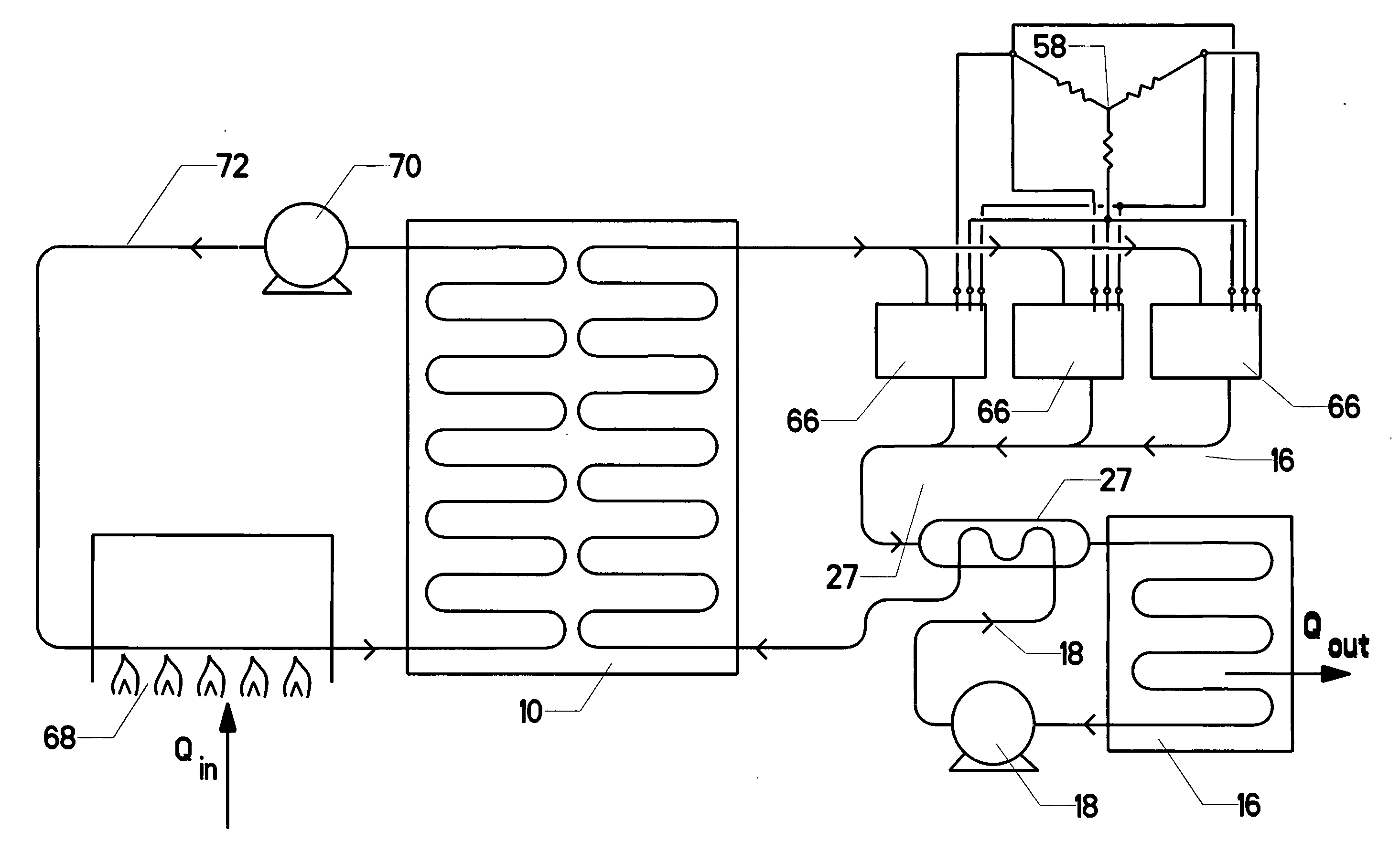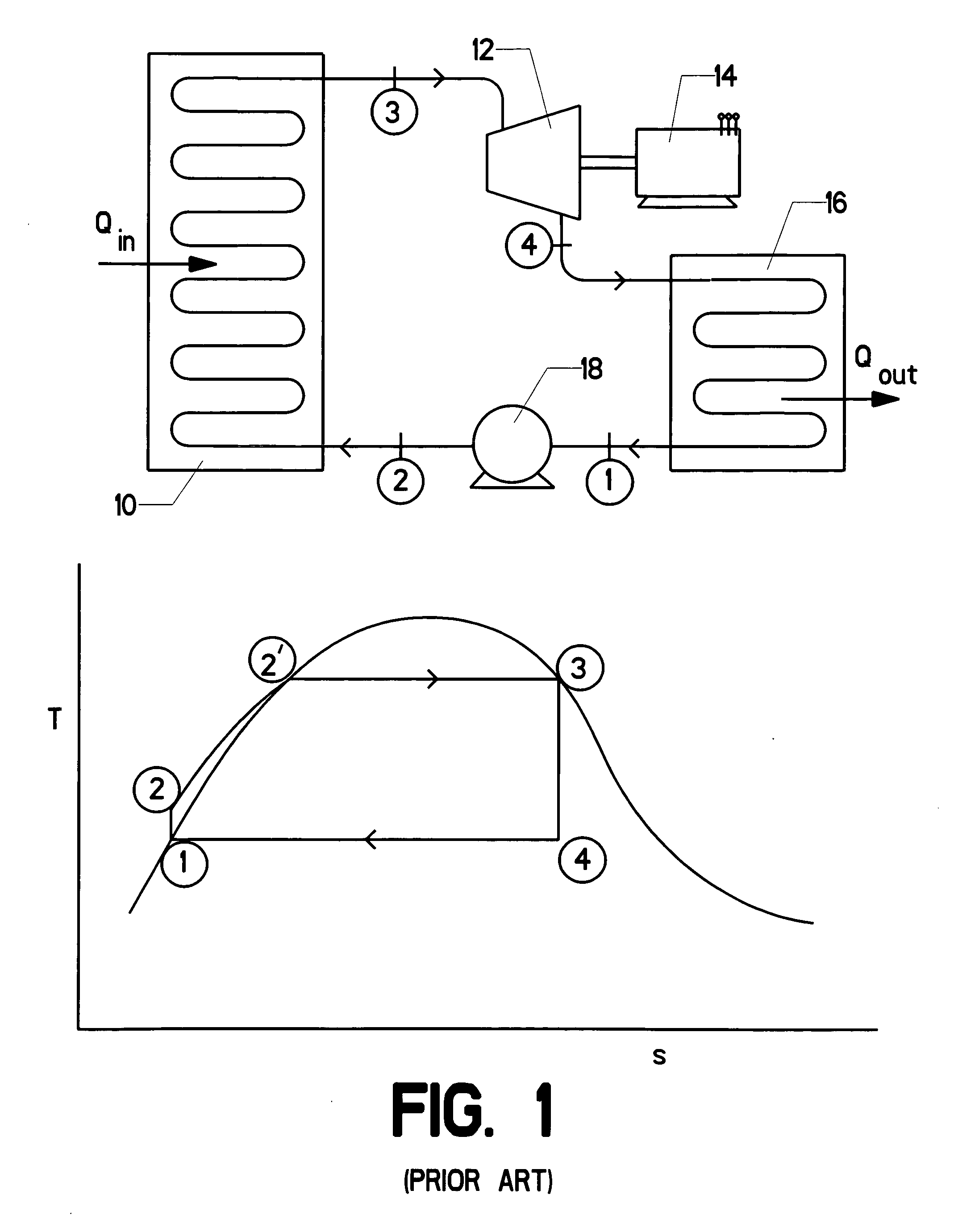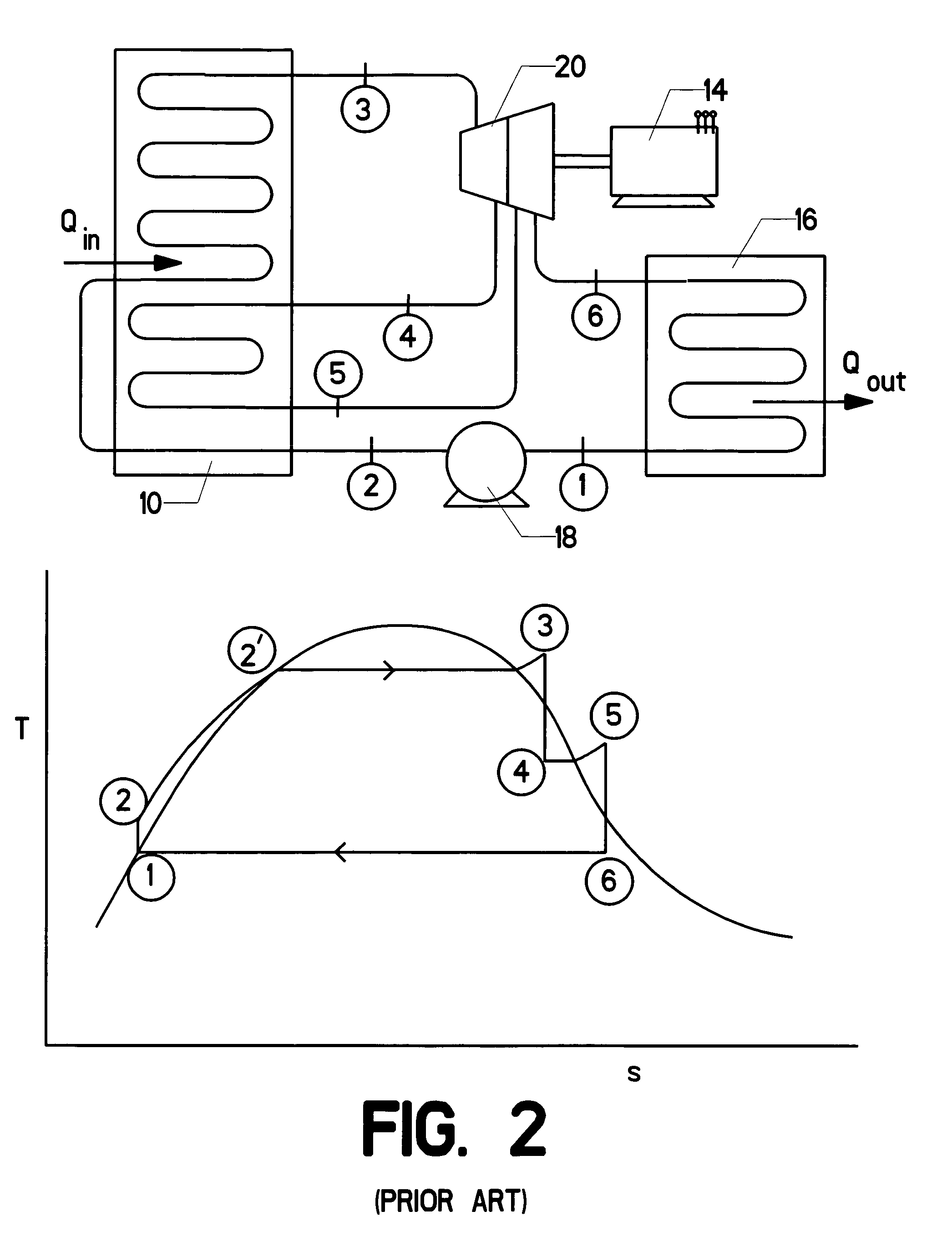Rankine cycle heat recovery methods and devices
a heat recovery and cycle technology, applied in the direction of mechanical equipment, machines/engines, electric generator control, etc., can solve the problems of inability to directly feed low-quality steam to the pump, never being used, and being impractical to design a pump, etc., to achieve the effect of reducing frictional losses and high rotational velocity
- Summary
- Abstract
- Description
- Claims
- Application Information
AI Technical Summary
Benefits of technology
Problems solved by technology
Method used
Image
Examples
Embodiment Construction
[0061]FIG. 6 shows an integrated expansion turbine 12 and generator 28, which are collectively referred to as turbo-generator 66. The turbo-generator is specially configured for efficient use with heat recovery cycle engines. Though it is not limited to organic Rankine cycle engines, many of its applications will lie in that field.
[0062]The turbo-generator is preferably able to operate over a wide range of rotational speeds and expansion ratios. It is preferably also able to handle a variety of working fluids, including fairly aggressive chemicals such as toluene. Common shaft 30 extends from one end of the device to the other. It is supported by two or more bearings, which are oilless bearings, preferably of the foil or electromagnetic type. The bearings can be located in a variety of suitable positions, such as front bearing 36, middle bearing 37, and rear bearing 40 in FIG. 6.
[0063]If electromagnetic bearings are used, then the common shaft will likely be suspended using only two...
PUM
 Login to View More
Login to View More Abstract
Description
Claims
Application Information
 Login to View More
Login to View More - R&D
- Intellectual Property
- Life Sciences
- Materials
- Tech Scout
- Unparalleled Data Quality
- Higher Quality Content
- 60% Fewer Hallucinations
Browse by: Latest US Patents, China's latest patents, Technical Efficacy Thesaurus, Application Domain, Technology Topic, Popular Technical Reports.
© 2025 PatSnap. All rights reserved.Legal|Privacy policy|Modern Slavery Act Transparency Statement|Sitemap|About US| Contact US: help@patsnap.com



